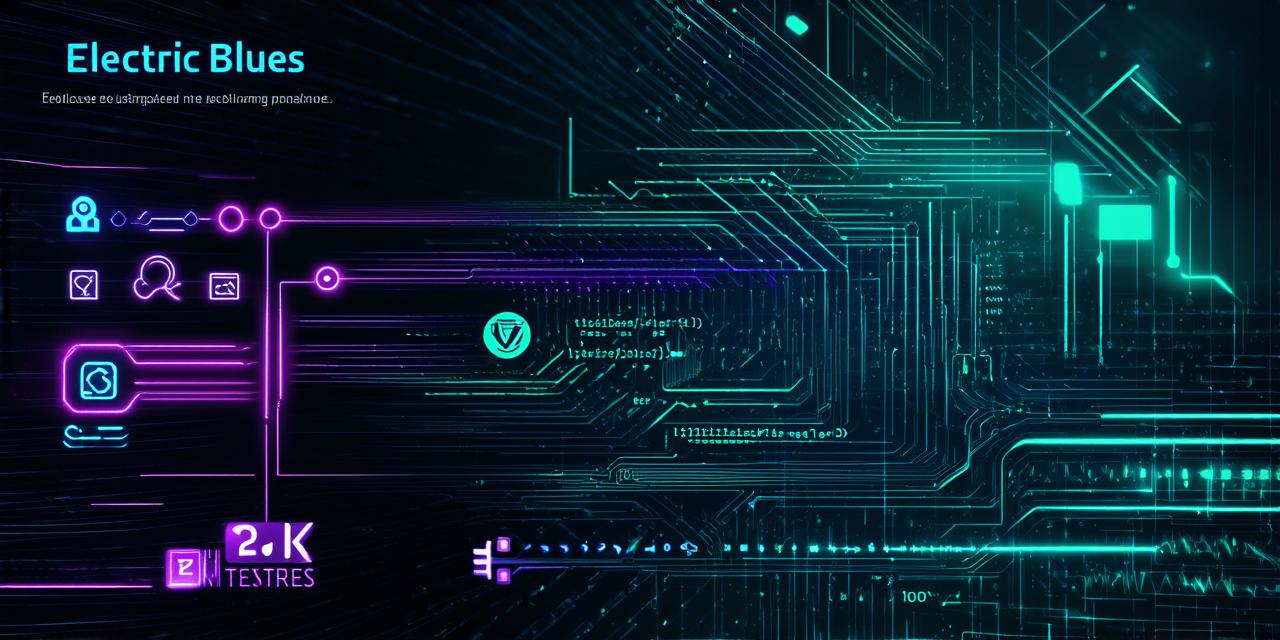Corrected HTML code:
Blockchain technology is one of the most disruptive innovations in recent years. With its ability to provide secure and transparent transactions without the need for intermediaries, blockchain has already transformed numerous industries, from finance to healthcare.
What is Blockchain?
Before diving into the technical details of programming on blockchain, it’s important to have a basic understanding of what blockchain is. At its core, blockchain is a decentralized, distributed ledger technology that enables secure and transparent transactions.
A blockchain is essentially a chain of blocks that contains information about transactions, such as their date, time, amount, and sender and receiver addresses. Each block in the chain is linked to the previous one using cryptographic algorithms, making it virtually impossible for any single entity to alter or manipulate the data stored on the network.
The Benefits of Blockchain Technology
Blockchain technology offers several key benefits that make it a popular choice for many industries:
- Decentralization: Since blockchain is decentralized, it eliminates the need for intermediaries such as banks or other financial institutions, which can significantly reduce transaction costs and improve efficiency.
- Transparency: All transactions on a blockchain are recorded in a publicly accessible ledger, which allows anyone to verify the authenticity and accuracy of the data.
- Security: Blockchain uses cryptographic algorithms to secure transactions and prevent fraud or unauthorized access. This makes it highly resistant to hacking and other forms of cyber attacks.
- Traceability: Blockchain technology provides a tamper-proof record of all transactions, making it easy to track the movement of goods, assets, and information across the supply chain.
Programming on Blockchain: An Overview
Now that we have a basic understanding of blockchain technology let’s explore how to program on it. Programming on blockchain involves writing smart contracts, which are self-executing programs that run on the blockchain network.
Smart contracts can be used to automate various tasks, such as verifying identities, managing assets, and facilitating transactions.
Understanding Smart Contracts
Smart contracts are self-executing programs that run on the blockchain network. They are written in a programming language that is specific to the blockchain platform you’re using (e.g., Solidity for Ethereum). Smart contracts consist of functions and modifier(s), which are similar to methods and properties in other programming languages.
One of the key benefits of smart contracts is their ability to execute automatically once certain conditions are met. This means that you don’t need to rely on intermediaries or middlemen to facilitate transactions, which can significantly reduce transaction costs and improve efficiency.
Programming on Blockchain: Step-by-Step Guide
Now that we have a basic understanding of smart contracts let’s explore how to program on blockchain step by step:
- Choose a Blockchain Platform: The first step is to choose a blockchain platform that supports smart contracts. Ethereum is the most popular blockchain platform for programming smart contracts, but there are many other options available, such as Hyperledger Fabric and Corda.
- Set up Your Development Environment: Once you’ve chosen a blockchain platform, you’ll need to set up your development environment. This involves installing the necessary software, such as the Ethereum client and an IDE that supports Solidity (the programming language used for Ethereum smart contracts).
- Write Your Smart Contract: The next step is to write your smart contract. This involves defining the functions and modifier(s) that will be used to execute actions on the blockchain network. You’ll also need to define the variables that will be used to store data, such as the addresses of users or the value of assets.
- Compile Your Smart Contract: Once you’ve written your smart contract, you’ll need to compile it using the Solidity compiler. This involves checking for syntax errors and generating bytecode that can be executed on the blockchain network.
- Deploy Your Smart Contract: The final step is to deploy your smart contract on the blockchain network. This involves creating a new account on the blockchain platform and specifying the address of the smart contract you want to deploy. You’ll also need to specify the amount of cryptocurrency that will be used to pay for transaction fees.
- Test Your Smart Contract: Once your smart contract is deployed, you can test it by interacting with it using a local blockchain or a testnet. This allows you to verify that your smart contract is functioning as expected and identify any bugs or issues that need to be fixed.

Real-Life Examples of Blockchain Programming
Now let’s explore some real-life examples of how blockchain programming is being used in various industries:
- Supply Chain Management: Blockchain technology is being used to improve supply chain management by providing a tamper-proof record of all transactions, making it easy to track the movement of goods and assets across the supply chain. For example, Walmart has implemented a blockchain-based system that tracks the origin of food products, allowing them to quickly identify and remove contaminated items from their shelves.
- Voting: Blockchain technology is being used to improve the security and transparency of voting systems. For example, the West Virginia Secretary of State’s office has implemented a blockchain-based system that allows eligible voters to cast their ballots online, providing a secure and transparent record of the voting process.
- Identity Verification: Blockchain technology is being used to improve identity verification by providing a secure and decentralized way to verify identities. For example, Microsoft has implemented a blockchain-based system that allows users to verify their identities using a combination of biometric data and public records, eliminating the need for intermediaries such as banks or other financial institutions.
- Healthcare: Blockchain technology is being used to improve healthcare by providing a secure and transparent way to store and share patient data. For example, the University of Illinois has implemented a blockchain-based system that allows patients to securely store their medical records, giving them greater control over their personal health information.
Conclusion
Blockchain programming is an exciting new field that is rapidly gaining popularity as more organizations seek to take advantage of the benefits of blockchain technology. By following the steps outlined in this guide and exploring real-life examples of how blockchain programming is being used in various industries, you can gain a deeper understanding of how this technology works and how it can be applied to your own organization.
